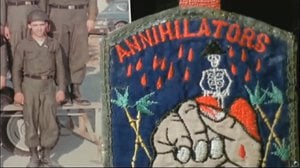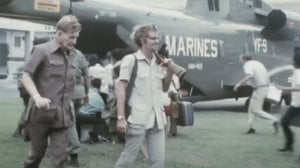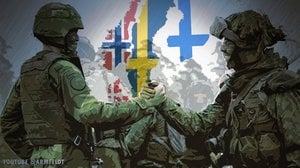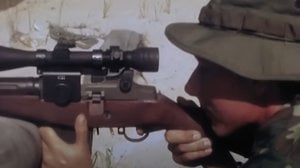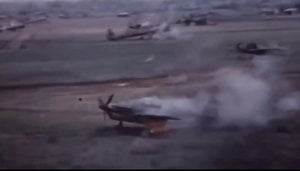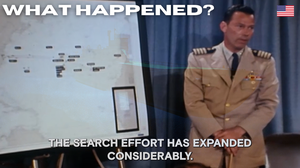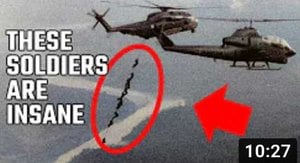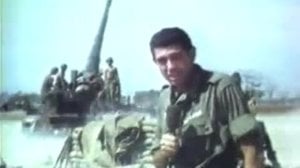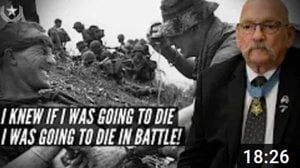
World War I Archives, Aisne Marne Offensive
Published 8 months ago
Archival footage of U.S. soldiers in World War I, taken by the U.S. Army Signal Corps and maintained by the U.S. National archives. The footage is of actions before and during the Château-Thierry and Aisne-Marne offensives in July of 1918. In March of 1918, General Erich Ludendorff, director of the German war effort, capitalized on the manpower advantage created by Russia’s exit from the war to launch a final offensive effort in the west. Spearheaded by stormtroopers employing infiltration tactics, Operation Michael managed gains of up to forty miles but failed to split the allied lines as intended. A subsidiary effort, Operation Blucher, intended to siphon allied reserves from the main effort in Flanders, managed to push the French Sixth Army back to the Marne. U.S. Army and Marine Corps units were committed to aid the French in stopping the German advance, and subsequently the American Expeditionary Force (AEF) launched counter-offensive operations at Château-Thierry and the Aisne-Marne area of operations.
The footage is an example of combat videography in its infancy, and the content is colored by the grainy texture of the images as well as by the tone of the captions inserted by the Signal Corps. We can see soldiers manning artillery pieces, a decisive arm during the great war. Brief glimpses are provided of towns destroyed and soldiers slain in the German onslaught. Trucks transport American soldiers to the front, another innovation in war. We receive a glimpse of the Marines and their hard-won victory at Belleau Wood before the AEF launches into the attack to drive the Germans from the Marne. Assaulting infantry and even a tank can be seen through the haze, and the Signal Corps subtitles offer an interesting comment on American soldiers forgetting their training and exposing themselves to fire.
Many of the scars of that war have faded, and today the battles can be traced by the monuments which dot the French countryside and reside in towns and villages, many with list of names and the inscription “mort pour la France.” Today, Château-Thierry is a decent sized country town with a touch of modern amidst the provincial farms and homes. After passing through the town, one can drive through rolling countryside dotted with idyllic hamlets, before arriving at a hill capped with thick woods. A sign diverts you from the main road and through the wood where the Marines painted their reputation in blood in terrain eerily reminiscent of Quantico. Past the Iron Mike memorial, the wood comes to an abrupt halt at the far side of the hill, where two 2,289 alabaster grave markers are watched over by a memorial chapel. Here, at the Aisne-Marne American Cemetery and Memorial lie those American dead not repatriated after the war, the American soldiers and Marines who fell at Belleau Wood, Château-Thierry, and in the Aisne Marne counter-offensive.
This footage is relevant for several reasons. Military technology has changed tremendously in the past century, and I can not imagine venturing onto a modern battlefield with a bolt action rifle (even one as good as the Springfield 1903), and without modern perks such as body armor, or radios connecting me with adjacent units, fire support agencies, and tactical air. And yet, drones, EW, PGMs, MBTs with composite armor and ERA, and all of the technology associated with modern warfare have not displaced the cannon and the machine gun. Soldiers are still required to dig into the ground to find refuge from artillery and machine gun fire, and infantry still must advance and take the ground. The War to End All Wars merely ushered in a deadlier conflict, the Second World War, which in turn led not to peace but to decades of Cold War. And here, in the 21st Century, war has returned to Europe, war with cannon and machine gun, trenches and mud and riflemen struggling to take the ground. And despite the propaganda, the motives for launching this war are similar to those that led to war in August 1914 – the ambitions of monarchs, the pride of dynasties, the lust for empire.
About the Author

Cam
Cam served as an infantry officer in the Marine Corps, deploying to the Horn of Africa and participating in combat operations in Iraq. He currently works in the maritime industry and in the defense sector as an instructor of combined arms planning and operations. An avid sailor, Cam founded and directs Triumph Sailing, a nonprofit that supports veterans and first responders through adventure and fellowship on the water. Triumph Sailing is preparing for the 2024 season of sailing on Galveston Bay and in the Gulf of Mexico. You can support the mission and next year's sailing season at Tri-Sail.Org.


